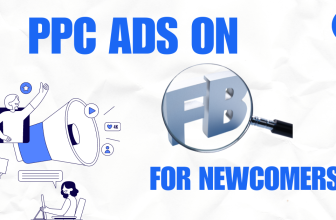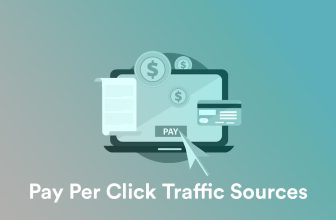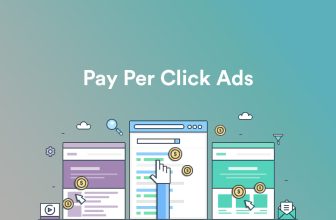
Paid media is all about boosting your business and driving traffic. And in the ever changing world of digital marketing, your strategy needs to keep up to date as well.
Right now, the big buzz in paid media is AI and machine learning. Platforms are becoming smarter, integrating AI into campaign management and optimization processes. As marketers, we need to stay on top of these developments while also respecting user privacy.
So, what adjustments should you make to your paid media strategy in 2024? Here are seven key changes you should embrace without hesitation.
#1 Review and Edit Google Tags
If you’re using Google tags for conversion tracking, it’s crucial to pay attention to this recent change.
In January 2024, Google rolled out an update to its Consent Mode, affecting marketers targeting users in the European Economic Area (EEA). This update requires action by March 2024 to maintain ad personalization and remarketing features in Google Ads.
In simple terms, the Consent Mode now adjusts tracking based on a user’s interaction with a website’s consent banner. Two new parameters, ad_user_data and ad_personalization, control user data and personalized advertising respectively.
As privacy regulations tighten, similar measures may be required for US advertisers in the future. In 2024, expect some discomfort with imperfect data due to privacy regulations.
#2 Include Influencers in Your Marketing Strategy
Influencers, whether big or small, can be a valuable asset for your brand if their audience matches yours. Even brands with modest followings can leverage influencer marketing to boost their presence and attract attention in the market.
Start by identifying top influencers in your niche and calculate the cost per acquisition (CPA) for collaborating with each of them. Building relationships with influencers, especially prominent ones, requires investment.
Once you’ve established potential partnerships, aim for a mutually beneficial arrangement where you gain more leads while the influencer earns income.
Pro Tip: Utilize influencer marketing tools like AspireIQ, BuzzSumo, Upfluence, and NeoReach to streamline your influencer integration efforts.
Ensure that the influencers you select have a substantial enough reach to add real value to your brand, and that the CPA aligns with your budget and objectives.
#3 Strategic Audience Management On Multiple Platforms
In 2024, mastering your audience management strategy is crucial across all platforms.
To start, gain a clear understanding of your ideal customer profile and determine which platforms they frequent. This insight will guide your audience-building efforts.
Once you’ve identified your target audience, focus on creating audiences tailored to each stage of the funnel, spanning from awareness to conversion. Select the most suitable platforms for engaging with different audience segments.
Regularly analyze and update your audiences throughout the year. Incorporate retargeting tactics and experiment with new audience segments to ensure you’re reaching the right people effectively.
Neglecting audience management can lead to wasted resources by targeting the wrong audience segments. However, with a proactive approach to refreshing and retargeting, you’ll uncover a dynamic audience that aligns with your goals.
In essence, effective audience management can be a game-changer for your marketing efforts in 2024.
#4 Get Ready For A Dominance of Video Content
You’ve probably heard the saying “content is king” in marketing circles. Well, in 2024, there’s a new mantra: video content is king.
Video has become the go-to format on social platforms like TikTok, Instagram, and Snapchat, as well as gaining traction in YouTube Ads. With platforms like YouTube Shorts rising in popularity, there’s a surge in vertical video ads.
For marketers, 2024 is the year to step up their video game. It’s not just about creating any video content, but about crafting engaging and high-quality videos tailored for each platform.
If the idea of producing videos for multiple platforms seems daunting, don’t worry. Start by creating evergreen content about your brand and experiment with different lengths. These videos can be repurposed across various platforms for both organic and paid content.
However, it’s crucial to maintain variety to keep your audience engaged. Seeing the same content repeatedly can lessen its impact, so mix it up to keep your video marketing efforts effective.
#5 Don’t Ignore Microsoft Ads
Microsoft Ads keeps raising the bar with its advertising platform year after year.
It’s not just a carbon copy of Google Ads; Microsoft Ads offers unique features that can give your brand a competitive edge.
For marketing pros, 2024 is the perfect time to explore what Microsoft Ads has to offer.
Here are some standout updates from the past year:
- Video and CTV ads: Microsoft introduced these new ad formats in September 2023. Now, advertisers can run online video ads or connected TV ads that users can’t skip while streaming content. This simplifies what used to be a complex process of buying TV ads, giving advertisers of all sizes a powerful tool.
- Generative AI solutions: In the same month, Microsoft unveiled three new AI features aimed at helping businesses grow and scale. These include Compare & Decide ads, ads for Chat API, and Copilot campaign creation. These AI-driven solutions offer innovative ways to optimize campaigns and reach your target audience more effectively.
- Data-driven attribution reporting: Microsoft Ads upgraded its UET tagging solution and introduced data-driven attribution modeling. This advanced feature uses machine learning to calculate the true impact of each ad interaction, moving beyond traditional last-click measurement methods.
While Microsoft Ads may not have the same market share as Google, it’s a platform that shouldn’t be overlooked. By tapping into Microsoft’s vast user base, you can reach a whole new audience and drive better results for your campaigns.
#6 Pay Attention To Improving The User Experience
In today’s fast-paced digital landscape, every interaction and website experience matters, especially when it comes to turning clicks into sales.
If you’re seeing high engagement or click-through rates (CTR) on your ads but low conversion rates, the issue might not be with your ads but rather with your website’s user experience.
In 2024, consumers expect seamless and intuitive website experiences, especially when they’re considering making a purchase.
Take a moment to put yourself in your customers’ shoes and evaluate your website’s checkout process. Are there any roadblocks or friction points that could be hindering conversions?
To optimize your website for users, consider these steps:
- Use tools like Hot Jar or User Testing to gather real-time analytics and identify user pain points.
- Ensure your website is optimized for both desktop and mobile devices.
- Place important calls-to-action (CTAs) above the fold, including on mobile screens.
- Check and improve your website’s loading speed to prevent users from bouncing off.
Remember, website optimization is an ongoing process, not a one-time fix. By continuously monitoring and refining your website’s user experience, you can enhance the effectiveness of your paid media campaigns and maximize your marketing budget’s impact.
#7 Learn To Make Use Of AI Tools
Let’s be real: Machine learning and AI are here to stay. In 2024, it’s time for marketing leaders to embrace these advancements rather than shy away from them.
Gone are the days of questioning whether to use AI; now, it’s about leveraging its power to your advantage.
As budgets tighten and teams shrink, PPC marketers are under pressure to achieve more with less. That’s where AI steps in.
AI can supercharge your ROI across all paid media campaigns, regardless of the platform.
But remember, don’t sacrifice your brand’s unique voice and personality for efficiency’s sake.
Take advantage of Google’s AI-driven assets, currently in beta. This Gemini-powered solution streamlines campaign creation and generates ad elements like images, headlines, and descriptions.
And if you’re already using Google’s Smart Bidding strategies, you’re tapping into the power of AI to automate the bidding process.
By combining creativity with machine learning, your ads have the potential to reach new heights in 2024.
Conclusion
The marketing landscape is always evolving, and flexibility is key to staying ahead.
In 2024, we’ve seen once-reliable tactics become less predictable. That’s why it’s crucial to adapt and embrace new strategies.
Harness the power of AI to gain a competitive edge. And don’t overlook platforms you’ve overlooked in the past; they may hold untapped potential for your brand.
What changes are you eager to explore this year?







